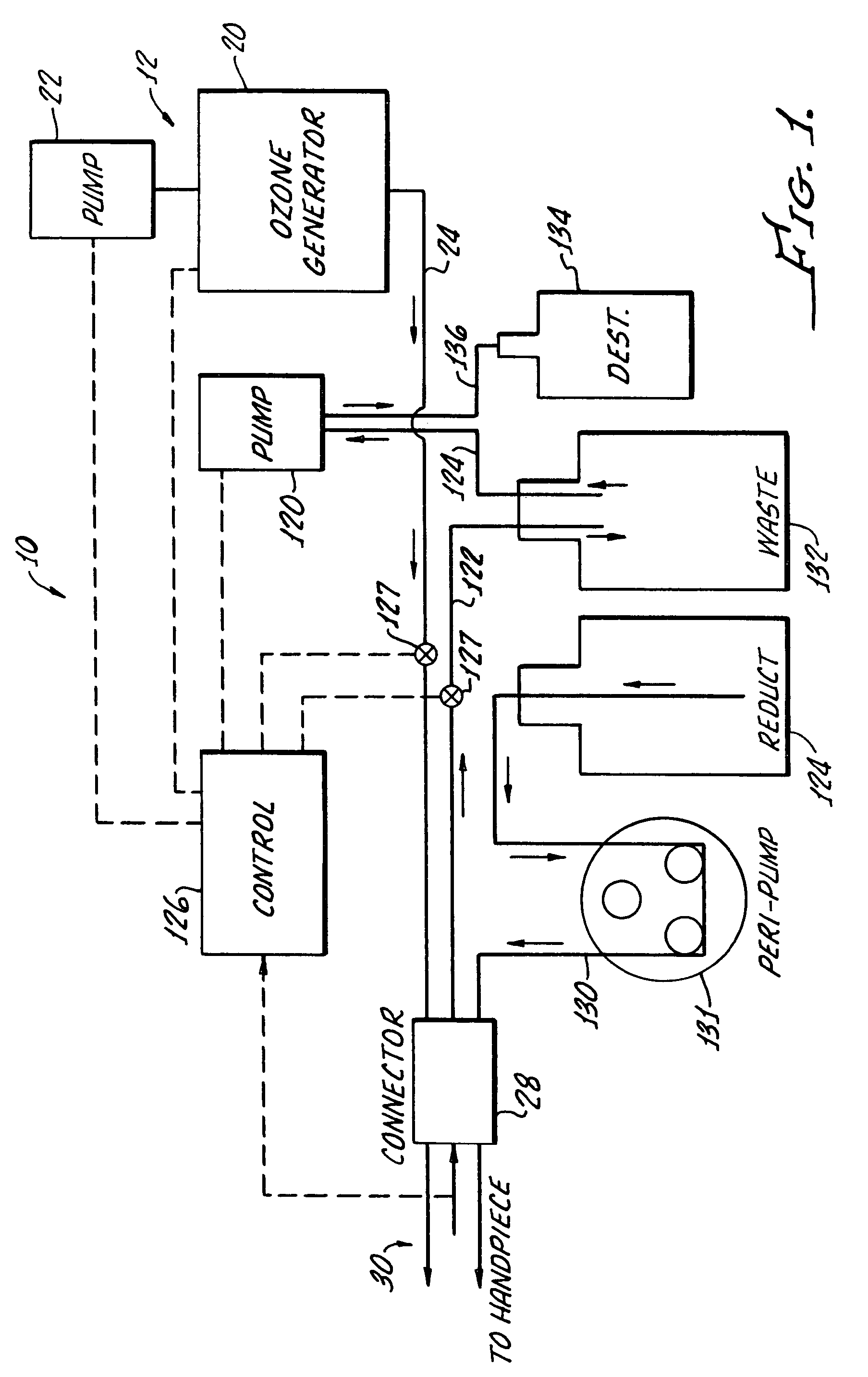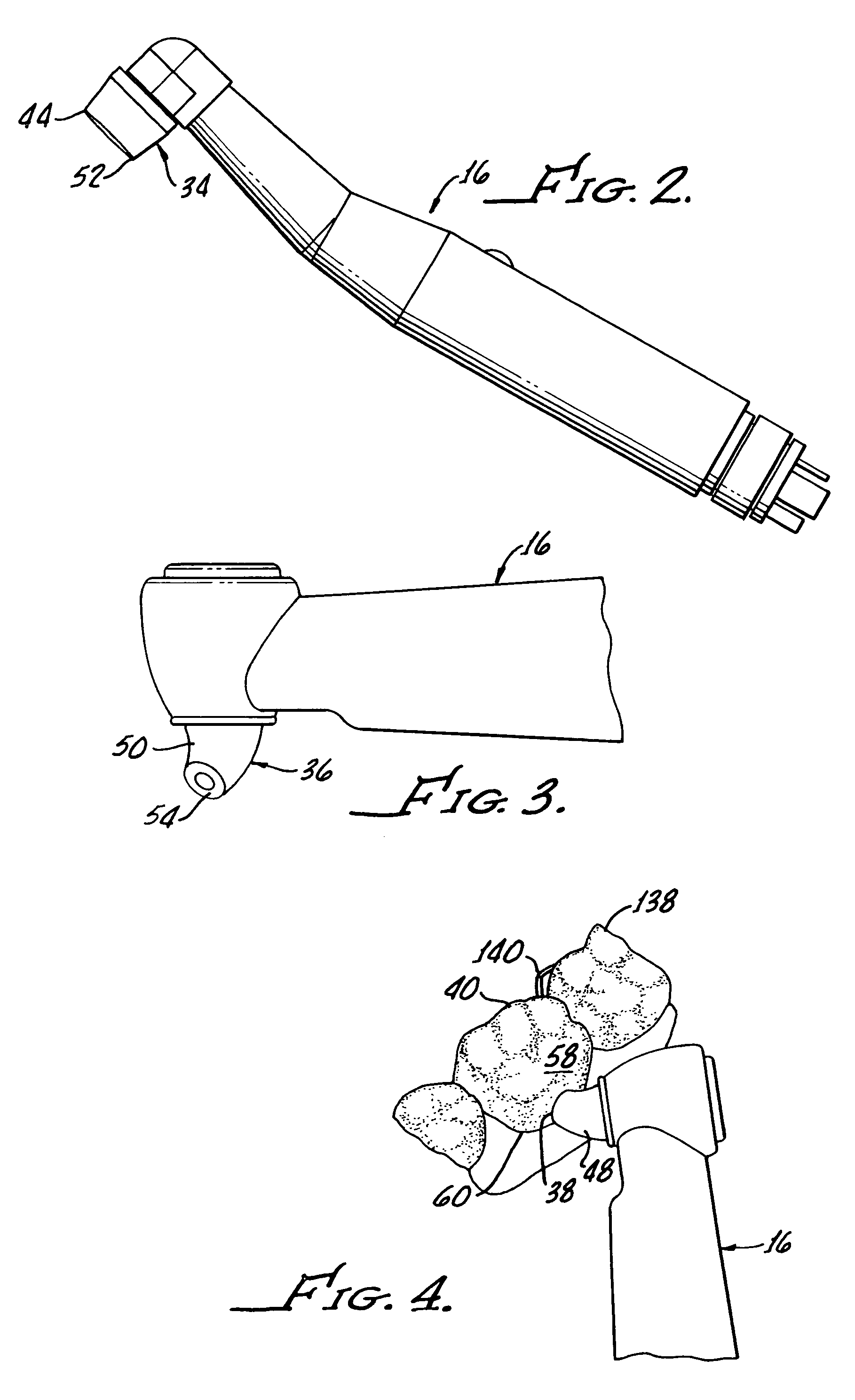Endodontic ozone therapy
a technology of ozone therapy and endodontics, which is applied in the field of endodontic ozone therapy, can solve the problems of affecting the work of dentists, affecting the patient's comfort, and requiring the insertion of saliva removers, so as to reduce the enzyme levels of extracts from inflamed human gingiva, lighten the effect of inflammation or and reduce the amount of ozone in the month of ulceration
- Summary
- Abstract
- Description
- Claims
- Application Information
AI Technical Summary
Benefits of technology
Problems solved by technology
Method used
Image
Examples
example 1
[0050]Many studies concerning the clinical evaluation of ozone have been based on assessments of its harmful effects rather than demonstrating any therapeutic benefits it may offer. Ozone is one of nature's most powerful oxidants which accounts for its ability to kill bacteria, spores and viruses. Uniquely, ozone decomposes to a harmless, non-toxic and environmentally safe material (oxygen). In this investigation, a multicomponent evaluation of the oxidative consumption of salivary biomolecules by ozone (O3) has been performed using high resolution proton (1H) nuclear magnetic resonance (NMR) spectroscopy. The ozone-generating equipment employed in this study was designed by Purezone Ltd. (Ipswich, U.K.). Unstimulated human saliva samples were collected from 8 patients and each of them was divided into two equivalent portions (0.60 ml). The first of these was treated with O3 generated from the above device for a period of 30 seconds; the second group of portions served as controls. ...
example 2
[0051]Ozone Effect on Microflora from Primary Root Caries Ex-Vivo
[0052]Primary root carious lesions (PRCL) are a major clinical problem. The aim of this study was to establish if ozone could achieve effective microbial killing in PRCL. An ozone producing generator (Purezone Ltd., Ipswich, U.K.) was used in this ex-vivo study assessing the use of ozone on PRCL. In this study, soft PRCL requiring restoration were used as these are the most severe type of lesion found in humans. 20 freshly extracted teeth with PRCL requiring restoration were used. After plaque removal using a hand held standard fine nylon fiber sterile toothbrush with sterile water as a lubricant to cleanse the surface, each tooth was then isolated using sterile cotton wool rolls and dried using a dry sterile cotton wool roll. A sample of PRCL was taken using a sterile excavator from half of the most active part of the lesion. Subsequently, 10 seconds of the ozonized water was applied to the lesion and another sample w...
example 3
[0055]Ozone Effect on Microflora from Primary Root Caries Ex-Vivo
[0056]The procedure of Example 2 was repeated except that ozonized water was applied to the lesion for 20 seconds. Using the paired student t-test, a significant difference was observed in the ozonized water group (log10 3.77±0.42, mean±SE) compared with the control group (log10 6.18±0.21) (p<0.001).
[0057]The results of these tests show that the use of ozone can provide an effective, rapid and simple means for killing micro-organisms in carious lesions.
PUM
 Login to View More
Login to View More Abstract
Description
Claims
Application Information
 Login to View More
Login to View More - R&D
- Intellectual Property
- Life Sciences
- Materials
- Tech Scout
- Unparalleled Data Quality
- Higher Quality Content
- 60% Fewer Hallucinations
Browse by: Latest US Patents, China's latest patents, Technical Efficacy Thesaurus, Application Domain, Technology Topic, Popular Technical Reports.
© 2025 PatSnap. All rights reserved.Legal|Privacy policy|Modern Slavery Act Transparency Statement|Sitemap|About US| Contact US: help@patsnap.com



